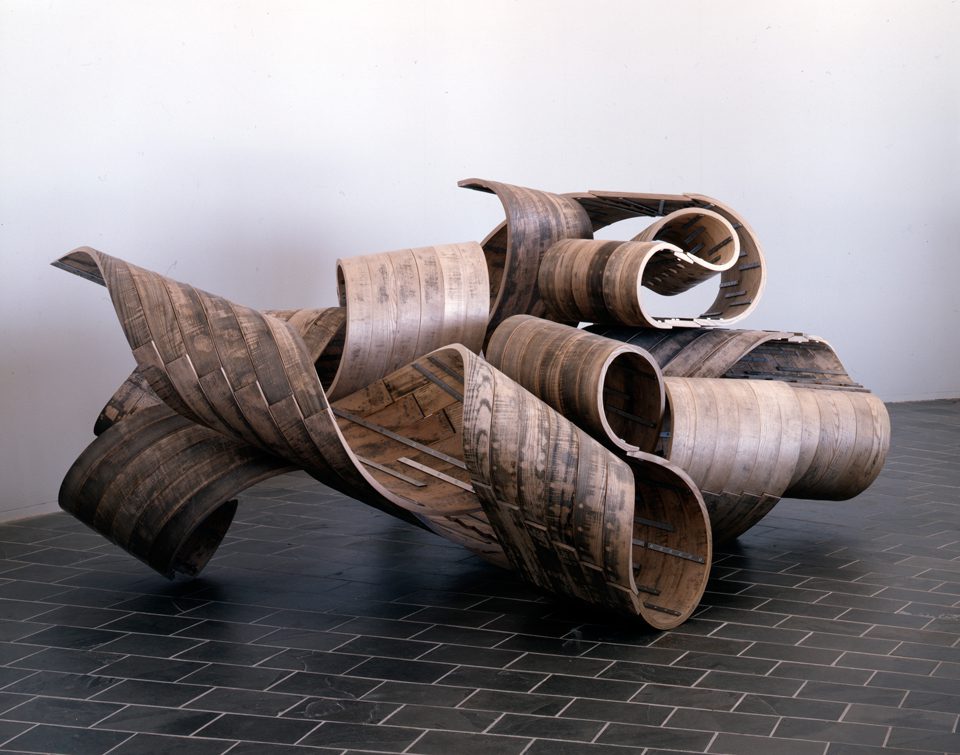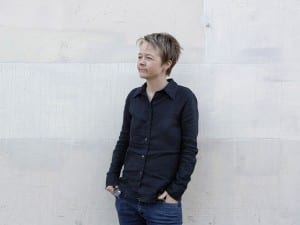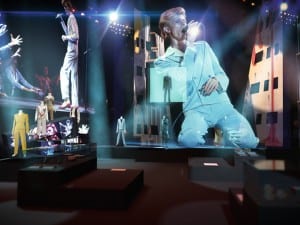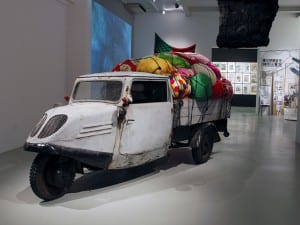Known for creating open structures of various sizes, Richard Deacon (b. 1949) is interested in communicating through a diverse range of materials. A leading British sculptor, Deacon won the Turner Prize in 1987. His work was on display at Tate Britain in a large chronological survey featuring around 40 individual pieces from the artist’s long career.
The exhibition at Tate Britain is a major overview of your work. How do you feel it has developed over time?
The most straightforward change is that most of what I make now is done through interactions with others, in collaboration or in partnership with someone else. Whereas, in the past, at the start of my practice, I produced everything myself. Today, many more people are involved, which has a significant impact on the range of materials and techniques I employ. However, in 2010 I had an exhibition at the National d’Art Contemporian in Strasbourg, with works created across a long period of time, between 1976 and 2009, and even though I could see many differences in style, I felt that they still all spoke together in the same consistent language.
Your body of work primarily revolves around sculpture. What drew you to this form in the first instance?
I started making sculpture from a very early age when I was at school. I am completely fascinated by the idea of creating things and the manipulation of materials. I can’t make things work, but I am absorbed by the strangeness of matter and how it is separate but still responds to touch. I think this interested me before I even knew that it was a way of thinking about sculpture.
What is your starting point for beginning new work?
I start in many different places depending on what I am working on, for example, I might begin with a material, idea, shape or sensation. I think one must start from a specific point and begin with something particular; after that things can grow outwards in quite a natural and expressive way. If you start in generality or with huge ideas of grandeur, the resulting process is reductive and can soon become unproductive and grind to a halt.
Your long-term project, Art for Other People, ran for over 10 years. What was the idea behind it?
Initially, when I began the collection back in 1982, I wanted to produce creations that functioned independently of context and were autonomous in that they didn’t need a particular space or gallery to be exhibited or understood. They needed to be sufficiently approachable for a diverse audience to encourage an ongoing conversation; so I made the decision to make them small in scale and diverse in use of material. In the end, I stopped the series in 1999 because I felt that I had grown to know the rules too well.
You have an MA in Environmental Media; how has it influenced your approach to making art?
Environmental Media was an experimental department at the Royal College of Art. Peter Kardia, who managed it, interested me a lot and I applied to the course primarily because of his involvement. While I was studying there, I made sculpture, not because I was in a sculpture department but because I had made the decision to. This was a very liberating experience and what I gained was independence very early on in my working life.
How did winning the Turner Prize affect you?
Being nominated in 1984, the first year the prize was awarded, probably had a far bigger effect than winning the prize in 1987. In 1984 I was an unknown artist and, since it was the first year of the prize, there was a great deal of media interest that was sustained over the months between the announcement and the award of the prize. I even got recognised in my local Tesco. In 1987 it was a different situation, there wasn’t as much hype. However, after the announcement things did accelerate for me; suddenly museums, curators and collectors had a much greater interest in my practice.
You have had a long and successful career; are there still other spaces and galleries in the world in which you would like to see your work?
I think there will always be other places where I would like to exhibit, for example, Shanghai, Mumbai, Beirut, Warsaw, Baku and Dakar. Then there’s MoMA and the Metropolitan Museum in New York, which I think would be wonderful spaces to show sculpture. I’ve just been to Istanbul for the first time and I thought it was a fabulous city. I’d love to spend time on a project there.
What do you want audiences to take from the exhibition at Tate Britain?
It is pretty difficult to reduce things to a message or meaning, particularly since ambiguity underlines a lot of what I do. However, I have always hoped that there would be some pleasure to be found in looking at and experiencing my work, and a freedom from authority in exploring the ideas around it.





